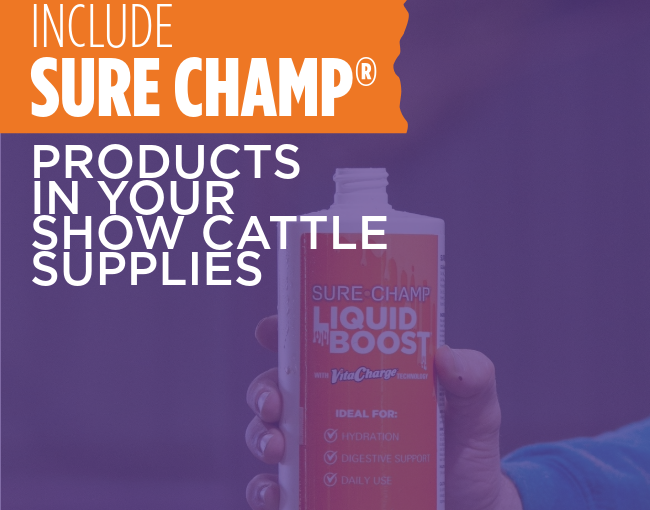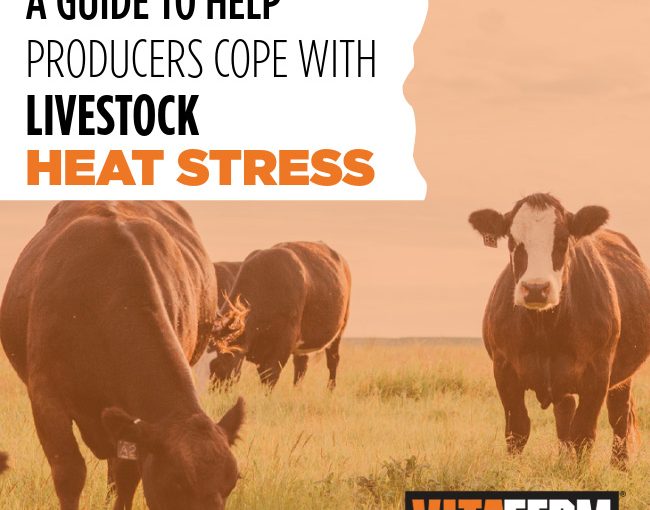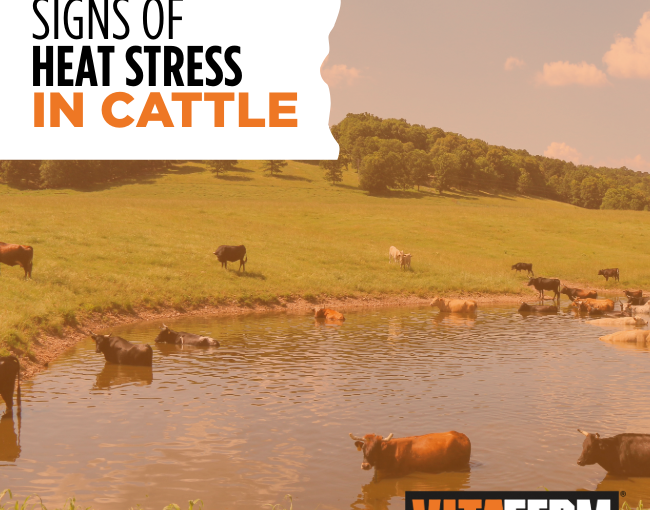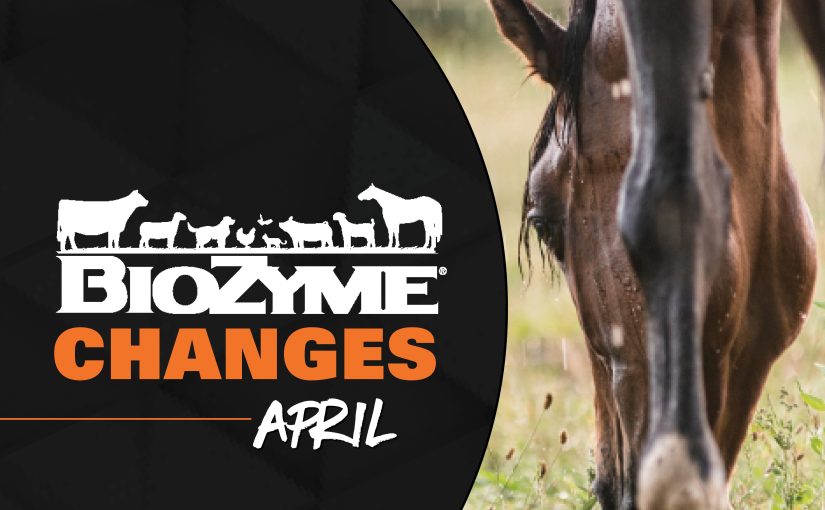Raise your hand if you enjoy heat and humidity. If you are in production agriculture, specifically in the livestock business, chances are those hands will remain firmly at your side or maybe tucked deep inside your pockets. Summer’s high heat and humidity present additional challenges for livestock producers in terms of overall health and performance.
Summer brings multiple challenges to livestock producers, including but not limited to insects and heat stress. Livestock heat stress does not discriminate based on species or location. Heat stress impacts cattle producers in the Dakotas, sheep producers in Texas, feedlot operators in Kansas and the 4-H kids with livestock everywhere.
What is heat stress?
Heat stress occurs when the animal’s ability to release heat becomes inhibited due to the overwhelming high temperatures. Typically heat stress isn’t caused by excessive heat alone; it is also triggered by high humidity and a decrease in air movement. Livestock, like humans, are most comfortable in their thermoneutral zone.
“The Thermoneutral Zone (TNZ) is the environmental temperature range in which the least effort is required by an animal to regulate body temperature. In the TNZ, an animal is most comfortable, has the fastest growth rate, and achieves the most efficient feed-to-gain ratio. This temperature zone is highly variable and depends on factors such as species, humidity, time of year, age, acclimation, amount of fat or hair coat insulation, level of production, wind, and other factors,” according to a Washington State University Extension Fact Sheet.
Livestock Heat Stress Cases Vary
It’s important to point out that when discussing heat stress, response varies by geographical location and even breed and species makeup.
“The unfortunate part is everybody’s situation is different based on regional climate differences,” said Chris Cassady, Ph.D., Director of Beef Technical Sales at BioZyme® Inc.
“Where a backgrounder in Texas might have to deal with severe heat for seven months, someone in North Dakota might have extreme heat for just two months. However, the commonality is understanding the cascade of events that go on with heat stress – symptoms to look for and what to do.”
While we are discussing livestock heat stress, remember, goats typically or more heat resistant than other species. However, it is the high humidity combined with heat that impacts them. Conversely, hogs have a lower heat threshold since they have very few functional sweat glands, so they can’t sweat to cool themselves. Learn more specifically about heat stress in pigs.
Signs of Heat Stress
During the summer months especially, producers should take extra care to look over their livestock on a regular basis to monitor factors that can lead to heat stress. Watch for behavioral and physical signs that your animals could be experiencing heat stress so you can effectively mitigate it before it turns from bad to worse.
Livestock heat stress can have significant implications on health, productivity and well-being, especially during hot and humid weather conditions. Recognizing the signs of heat stress in livestock is essential for implementing timely interventions to prevent heat-related illnesses and losses.
The signs and symptoms of heat stress across species will be similar.
Increased Respiration Rate
The first visible sign of livestock heat stress you should look for across species is an increased respiration rate. Excessive or rapid panting, with extended periods of open-mouth breathing, is a sign of heat stress. Animals that show this increase in respiration rate, will have increased air volume intake, which can ultimately lead to other sicknesses. With increased air intake, animals are inhaling more dust, dirt, bacteria and viruses into their bodies, which can quickly lead to bigger problems. Elevated respiratory rates indicate the animal’s effort to cool down and maintain thermal equilibrium.
Seeking Shade, Shelter & Water
When battling heat stress animals often show you what they need. The most common sign of heat stress is animals seeking out shade and water during the peak heat of the day. This disrupts the normal feeding pattern of continuously grazing and consuming smaller meals.
In ruminants – cattle, sheep and goats – this distraction shifts to night grazing and slug feeding where they eat more at once due to increased hunger. Slug feeding leads to acidosis and bloat in ruminants, which can lead to more health issues or death. When they bunch up during the day, they also are more likely to be exposed to sickness because of shared germs – think of containing school kids in an enclosed room with no fresh air.
Heat-stressed animals often seek shade, shelter or cool, shaded areas. This is to escape direct sunlight and reduce heat exposure. Providing adequate shade structures and shelter options can help mitigate the effects of heat stress.
Animals experiencing heat stress may increase their water consumption to maintain hydration and regulate body temperature. Providing access to clean, fresh water is crucial during periods of heat stress to prevent dehydration and electrolyte imbalances.
Decreased Feed Intake
Livestock heat stress may cause reduced feed intake due to decreased appetite and metabolic heat production. Reduced feed consumption can lead to decreased nutrient intake and weight loss, impacting overall productivity and performance.
Other Signs & Symptoms
Other typical signs include lethargy, drooling, aimless wandering or staggering and—in severe cases—ultimately death. In addition, increased body temperature and increased heart rate are also symptoms of heat stress.
One extra sign to watch for in pigs is blotchy skin, especially around the ears and snout.
Implementing management practices to reduce heat load are critical for mitigating the effects of livestock heat stress.
Effects of Heat Stress
It’s worth mentioning that some effects of heat-stressed livestock aren’t immediately obvious. They can be long-lasting and detrimental to the overall health of your herd or flock.
Livestock heat stress can impact both performance and reproductivity. Animals that are not eating or grazing are not gaining. Heat stress can cause shorter gestation lengths, resulting in lighter birth weights and immune-compromised offspring.
Extreme heat is a major cause of poor reproductive performance. Females can face problems initiating and maintaining pregnancy. The males can become sterile and also experience a lack of libido.
Prevention & Treatment
When tackling heat stress, animals typically provide valuable information about what they need. Now, preventing heat stress before it happens is ideal. However, in some cases you will need to treat the specific symptoms of heat stress animals are dealing with.
Treatment is often the same as preventative measures but with more care and caution. Let’s explore some of the ways to mitigate and treat heat stress
Keep Livestock Hydrated
The first step in alleviating heat stress is to provide plenty of clean, fresh, cool water. Keeping your animals hydrated is critical in preventing heat stress since dehydrated animals have problems maintaining body temperature.
If you provide plenty of water sources, spread them across several areas to help eliminate the crowding of animals at one particular location. Also, keeping water under shade will help keep the animals gathered under the shade.
Limit Working During the Day
Don’t work your livestock during extreme heat. If you need to work your livestock, plan any work as early in the morning as possible before the day heats up. Working animals causes stress and combined with heat stress can cause serious issues. If you need to transport your livestock, do so early in the day or later in the evening when the temperature cools.
Provide Shade
Sometimes trees are enough to help eliminate heat stress. Livestock grazing in a large open area where trees are not an option might need some man-made shade structures. If you have a building that serves as shade, make sure it has proper ventilation and circulation like a fan. An enclosed structure with minimal air movement will only contribute to your animals’ heat.
Adjust Feeding Times
Digestion contributes to increased body heat, therefore, heightening the chances of heat stress. Wait until later in the day for your afternoon feeding, and if you only feed once per day, do that feeding in the early afternoon.
Other Nutritional Considerations
Finally, keeping AO-Biotics® Amaferm® in your livestock diets, especially during summer temperatures, is especially beneficial for eliminating heat stress. Amaferm is a prebiotic research-proven to enhance digestibility.
“Feeding Amaferm during heat stress has multiple benefits, including improved digestibility, increased energy availability, improved rumen function and decreased loss of performance. The improved digestibility observed with Amaferm provides more energy to the animal during heat stress when intake is reduced,” Cassady said.
Amaferm is found in our product lines for livestock, including:
- VitaFerm®, a line of nutritional supplements for beef cattle that maximizes energy and forage utilization for successful production.
- Gain Smart®, a line of vitamin and mineral supplements for stocker cattle that promotes healthy, economical pounds by maximizing the energy and protein available in the diet.
- DuraFerm®, a line of small ruminant nutrition supplements designed to ensure your herd is receiving optimal digestive health and nutrition resulting in maximized performance at every stage of production.
- Sure Champ®, a line of livestock show supplements that proactively work to assist with the challenges created by the show environment.
Bring on the HEAT® Technology
Along with the benefits Amaferm offers to assist with overall health and digestion to help alleviate heat stress, livestock can also benefit from HEAT technology found within many of the BioZyme products.
Our HEAT Technology consists of:
- AO-Biotics Amaferm, a research-proven prebiotic that enhances digestibility, extending the nutritional value of feed and forages.
- A proprietary blend of essential oils supports animals when heat is a challenge.
- Garlic, which helps deter insects.
“The proprietary blend of capsaicin and essential oils in HEAT technology helps improve blood flow to the extremities,” Cassady said. “When the benefit of improved rumen function of Amaferm is tied with the HEAT technology, you can be assured your livestock will be out grazing even in the most extreme temperatures and not huddled under the shade trees.”
A lowered body temperature has several key benefits. It helps get the females bred and keeps them bred. It helps keep those animals out grazing, which means the potential for gaining is greater, even in warmer climates.
More Choices with HEAT Technology
Now, your customers have more product choices with HEAT technology, including:
VitaFerm® ONE HEAT®
A free choice vitamin & mineral supplement for beef cattle that promotes cattle performance when temperatures are above 70 degrees Fahrenheit or when cattle are grazing fescue.
NEW: VitaFerm® ONE HEAT® with ClariFly®
A free choice vitamin & mineral supplement for beef cattle with ClariFly that promotes cattle performance when temperatures are above 70 degrees Fahrenheit or when cattle are grazing fescue.
VitaFerm® ONE HEAT® CTC 3G with ClariFly®
A free choice vitamin & mineral supplement with ClariFly and CTC for beef cattle that promotes cattle performance when temperatures are above 70 degrees Fahrenheit or when cattle are grazing fescue. CTC helps control anaplasmosis.
NEW: VitaFerm® ONE HEAT® Mineral Tub
A free choice vitamin & mineral supplement for beef cattle in a cooked tub that promotes cattle performance year-round.
VitaFerm® Concept•Aid® 5/S HEAT®
A premium free choice 5% phosphorus vitamin & mineral supplement for beef cattle that supports reproductive success when temperatures are above 70 degrees Fahrenheit or when cattle are grazing fescue.
VitaFerm® Concept•Aid® 5/S HEAT® with ClariFly®
A premium free choice 5% phosphorus vitamin & mineral supplement with ClariFly for beef cattle that supports reproductive success when temperatures are above 70 degrees Fahrenheit or when cattle are grazing fescue.
VitaFerm® Concept•Aid® 5/S HEAT® CTC 3G
A premium free choice 5% phosphorous vitamin & mineral supplement with CTC for beef cattle that supports reproductive success when temperatures are above 70 degrees Fahrenheit or when cattle are grazing fescue. CTC helps control anaplasmosis.
NEW: VitaFerm® ReproMaxx™ HEAT®
A premium free choice vitamin & mineral supplement for beef cattle that maximizes reproductive success when temperatures are above 70 degrees Fahrenheit or when cattle are grazing fescue. Includes research-proven levels of Zinpro ® organic trace minerals.
VitaFerm® HEAT® Tub
A vitamin & mineral tub for beef cattle that supports overall health when temperatures are above 70 degrees Fahrenheit or when cattle are grazing fescue.
VitaFerm® HEAT® Stress Tub
A tub for beef cattle that supports digestive health and intake when temperatures are above 70 degrees Fahrenheit. (Formerly known as Vita Charge HEAT Stress Tub.)
Gain Smart® Stocker HEAT®
A free choice vitamin & mineral supplement for stocker cattle that maximizes efficient gain when temperatures are above 70 degrees Fahrenheit.
HEAT for Sheep
DuraFerm® Concept•Aid® HEAT® Sheep – A free choice vitamin & mineral supplement for sheep that supports reproductive success when temperatures are above 70 degrees Fahrenheit.
Dealer Support Available
With HEAT season right around the corner or perhaps already here in some geographic locations, we are ready to support our dealers! Watch for marketing support materials in the SAMM Center on the Online Dealer Center. We’ll have print ads, postcards and invoice stuffers.
Also, look for social media graphics in our Social Media Toolbox.



